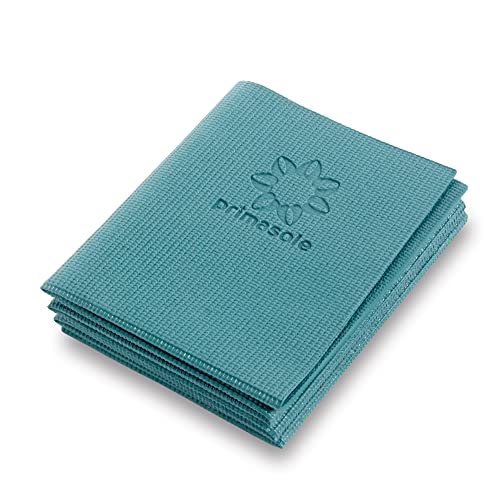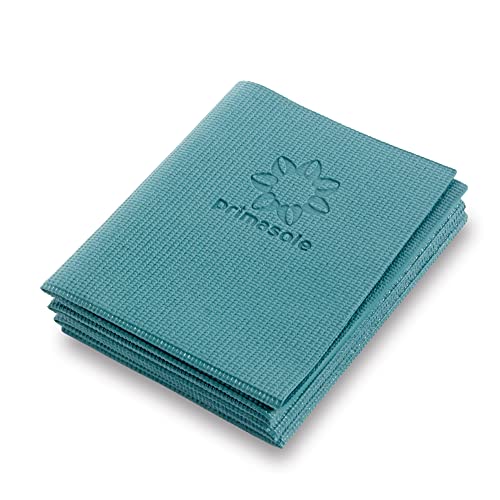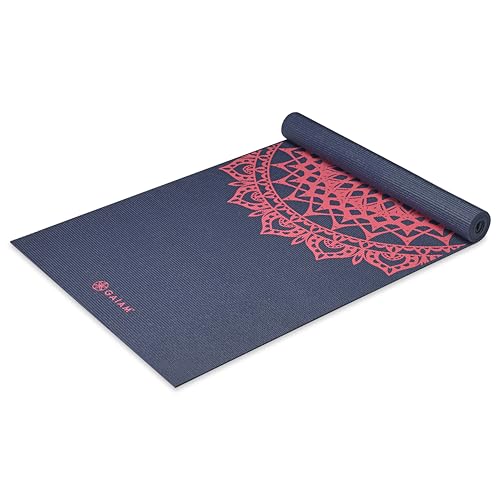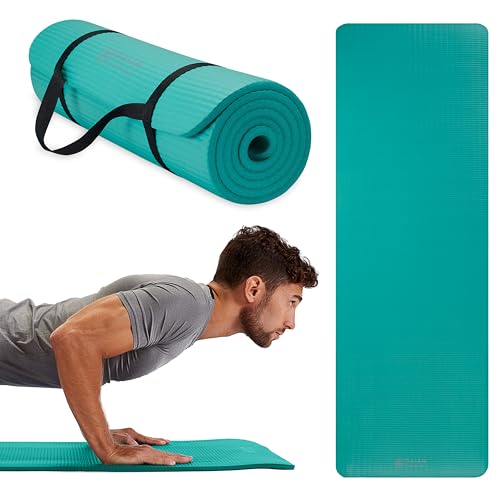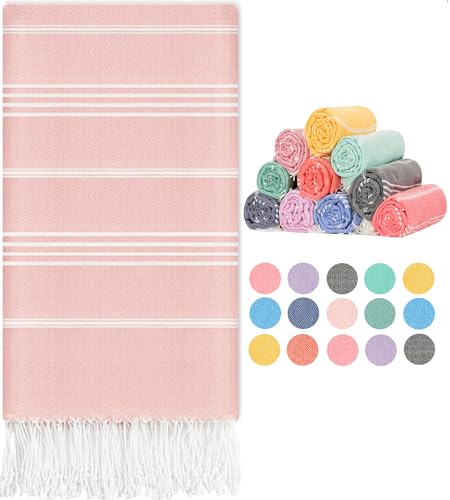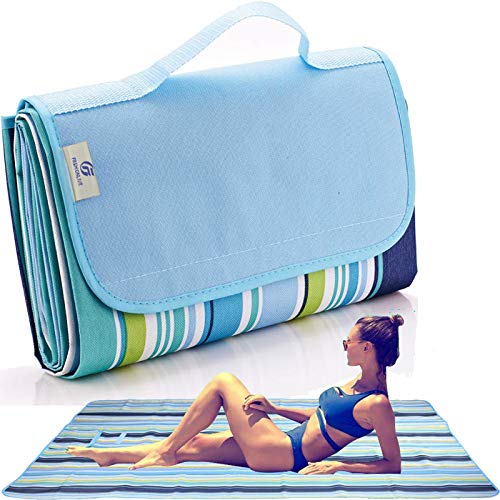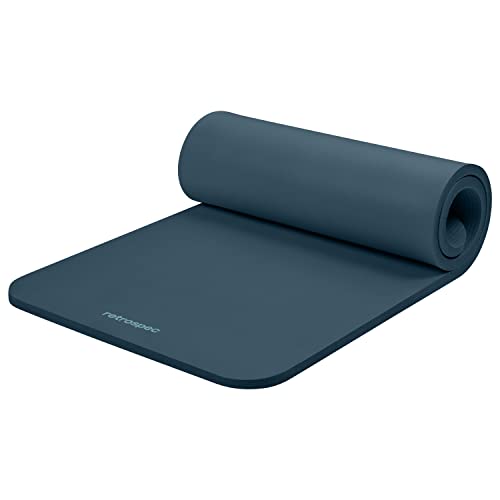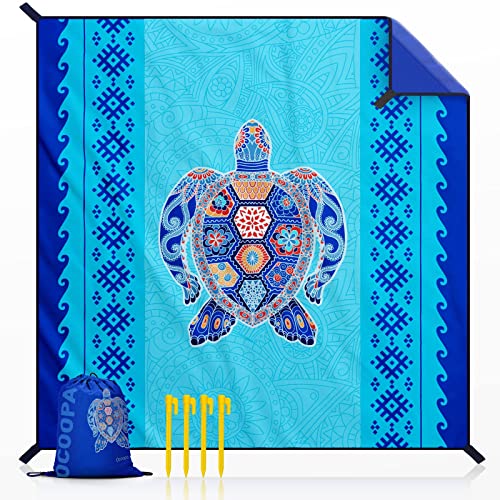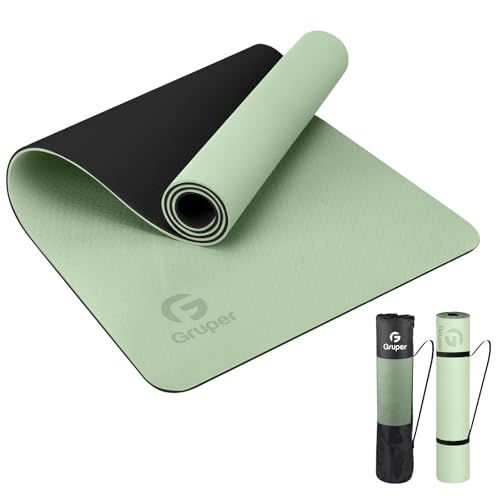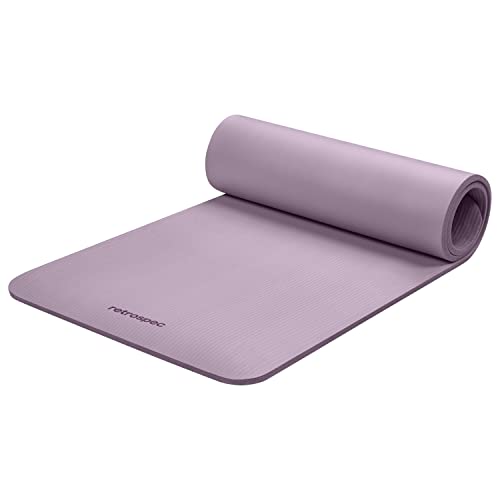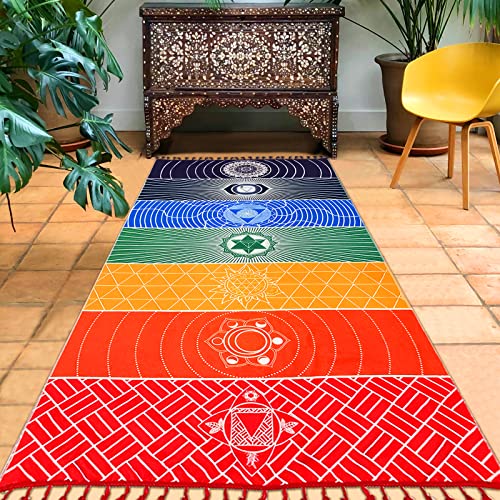As a seasoned fitness equipment expert, I have spent over a decade meticulously testing gear, from high-performance treadmills to specialized accessories. For this review, I took 10 promising models—ranging from traditional mats to innovative sand-proof blankets—out to the coastline. My testing focused on key variables crucial for outdoor practice: sand-resistance, durability against abrasive surfaces, portability, and the critical ability to maintain stability on shifting terrain. If you plan to incorporate beach yoga into your routine, having the right sand-proof exercise surface is essential outdoor fitness gear.
Primasole Folding Travel Yoga Mat Foldable light weight Easy to carry to Workout Fitness Class Beach Park Travel Picnics 4mm thick Jango Green Color PSS91NH050A
This Primasole folding mat, designed specifically for travel, translates surprisingly well to beach use due to its compact nature. The PVC material is durable and resists immediate tears, though its open-cell nature means sand and saltwater will cling if fully saturated. At only 2.0 lb and 4mm thick, it folds into a small square, making it perfect for backpack transport. It provides minimal cushioning but an excellent barrier between you and the hot sand.
Key Specifications:
– Material: Durable PVC (Polyvinyl Chloride)
– Thickness: 4 mm
– Dimensions: 68 × 24 inches
– Weight: 2.0 lb
Performance Highlights:
– Foldable design minimizes bulk, fitting easily into a standard tote bag or luggage.
– Embossed surface provided decent friction during standing poses on slightly damp, packed sand.
– Quick to shake off large debris, although fine sand sticks to the grooves.
Pros
– Highly portable and lightweight.
– Good physical barrier against heat and sharp objects.
– Easy to wipe clean.
Cons
– Minimal cushioning for sensitive joints (not ideal for seated poses on hard sand).
Who Should Buy This: Specific users prioritizing ultra-portability and seeking a dedicated, thin surface for dynamic Vinyasa or standing beach yoga practice.
My Testing Experience: While it lacks the plush feel of studio mats, its folding capability makes it a practical beach companion. The 4mm thickness is adequate for stability but demands caution during knee-intensive postures.
Gaiam Yoga Mat Classic Print Non Slip Exercise & Fitness Mat for All Types of Yoga, Pilates & Floor Workouts, Pink Marrakesh, 4mm, 68″L x 24″W x 4mm Thick
The Gaiam Classic is a benchmark in standard PVC mats, known for its textured, sticky surface—a feature we specifically tested on the beach. While the sticky non-slip texture is fantastic for floor grip indoors, outdoors it functioned as a magnet for fine, damp sand. This PVC yoga mat is 6P Free and lightweight, but its traction comes at the cost of sand-shedding efficiency.
Key Specifications:
– Material: Non-Toxic PVC (6P Free)
– Thickness: 4mm
– Dimensions: 68-Inch x 24-Inch
Performance Highlights:
– Excellent grip on non-sand surfaces (like wooden decks near the beach or cement patios).
– Lightweight and easy to roll with the included carrier.
– Durable construction held up well against minor surface friction from shells and small pebbles.
Pros
– Superior traction for dry standing poses.
– Reliable durability for a traditional mat.
– Healthy material choice (non-toxic).
Cons
– The sticky texture aggressively traps sand, requiring substantial brushing or washing after use.
Who Should Buy This: Users needing an affordable, reliable, and classic mat for general travel who may occasionally practice on very dry, packed sand or concrete near the water.
My Testing Experience: For true beach conditions, the amount of sand carried home was noticeable. This is better suited for a covered outdoor area rather than direct oceanfront use if sand-cleanup is a concern.
Gaiam Essentials Thick Yoga Mat Fitness & Exercise Mat With Easy-Cinch Carrier Strap, Teal, 72″L X 24″W X 2/5 Inch Thick
This mat significantly deviates from traditional yoga mats, utilizing 10mm (2/5 inch) high-density NBR foam. While the cushioning is superb for joint protection, NBR (Nitrile Butadiene Rubber) is inherently spongy and porous. We found that while it provided exceptional support on rocky or very uneven ground, it quickly absorbed moisture and salt, making it heavy and slow to dry.
Key Specifications:
– Material: High-Density NBR Foam
– Thickness: 10mm (2/5 Inch)
– Dimensions: 72″L X 24″W
– Feature: Textured, non-slip surface
Performance Highlights:
– Plush, shock-absorbing support, ideal for restorative yoga or meditation on uneven sand dunes.
– Excellent cushioning makes planks and knee-intensive poses comfortable.
– Odour-resistant materials held up well after being exposed to salty air.
Pros
– Exceptional joint comfort and support.
– Great for physical therapy or low-impact workouts outdoors.
– Durable against punctures from debris.
Cons
– Heavy and bulky; absorbs water/sweat easily, increasing weight and drying time.
Who Should Buy This: Individuals with joint sensitivities who prioritize maximum cushioning above all else, and who are willing to deal with the bulk and careful post-workout cleaning required for high-density foam.
My Testing Experience: I highly recommend this for users practicing Pilates or deep stretching where support is paramount, but be prepared to carry a bulkier item and allow ample time for drying.
Turkish Beach Towels Vacation Essentials Yoga Blanket Pool Workout Towel Oversized Sand Free Quick Dry Lightweight Meditation Supplies Mat Cover Surf Boat River Float Accessories Gym Excise Stuff
This item isn’t a mat, but a hybrid Turkish towel/yoga blanket. Its strength lies in its quick-drying, sand-repellent fabric. For beach yoga specifically, it acts as a phenomenal mat topper or a superb surface for meditation and restorative poses. It offers zero cushioning, but its soft cotton weave feels much better against the skin than PVC when covered in sand.
Key Specifications:
– Material: Woven Cotton/Fabric Blend
– Feature: Quick-drying, Sand-Free
– Usage: Towel, Blanket, Mat Cover
Performance Highlights:
– Sand shakes off effortlessly due to the flat weave, making cleanup instantaneous.
– Generous size provides a large, clean surface for movement.
– Extremely lightweight and compact when folded.
Pros
– The most effective sand-shedder tested.
– Versatile for use as a towel or shawl.
– Machine washable and highly durable.
Cons
– Provides no grip or cushioning; prone to shifting during dynamic movements.
Who Should Buy This: People looking for a genuinely sand-free surface, primarily for meditation, lying down, or light stretching, or those needing a hygienic, quick-dry cover for their existing, less beach-friendly yoga mat.
My Testing Experience: While I couldn’t reliably perform a Warrior III without the fabric shifting, it was my favorite item for sitting comfortably after a cool-down. The sand-repellent claim is highly accurate.
FashionLive Beach Blanket Extra Large Picnic Blankets Sandproof Waterproof Outdoor Indoor Blanket Lightweight Handy Mat Portable Beach Mat for Camping Hiking Travel Park Grass
Similar to the Turkish towel, this FashionLive product is marketed as a large blanket, but its construction lends itself to outdoor use. Crucially, it features a waterproof cushioned backing (PVC) combined with a durable polyester surface. This waterproof backing is critical for damp beach environments, preventing cold moisture from soaking through.
Key Specifications:
– Material: Polyester and PVC Backing
– Dimensions: 79 x 57 inches (Extra Large)
– Feature: Sandproof and Waterproof Backing
– Capacity: Supports 3 to 5 people
Performance Highlights:
– Excellent defense against dampness; the PVC backing effectively blocks wet sand or grass moisture.
– Generous surface area suitable for couples yoga or group stretching.
– Folds into a neat, integrated carrying handbag shape.
Pros
– Superior moisture barrier compared to traditional mats.
– Extremely large usable surface.
– Easy to clean (wipe backing, shake surface).
Cons
– Polyester surface provides limited grip for vigorous yoga poses.
Who Should Buy This: Families, groups, or individuals who want a substantial, truly waterproof area for beach picnics, lounging, and gentle outdoor fitness, prioritizing dryness and space over intense grip.
My Testing Experience: This is less a “yoga mat” and more the best yoga mat for beach substitute when sand and water protection is the top priority. It’s too large for solo travel, but perfect for a beach day bag.
Retrospec Solana Yoga Mat 1″ Thick w/Nylon Strap for Men & Women – Non Slip Exercise Mat for Home Yoga, Pilates, Stretching, Floor & Fitness Workouts – Ocean Blue
Retrospec offers maximum comfort here with an astonishing 1-inch thick foam mat. This extreme thickness is primarily geared toward intense joint protection in home gyms, but it excelled at stabilizing the user on highly uneven beach surfaces where smaller mats would sink. The density is firm, preventing the “squishy” feeling that can destabilize balancing poses.
Key Specifications:
– Material: Firm Foam (Phthalate, heavy metals, and latex free)
– Thickness: 1 inch (25.4mm)
– Dimensions: 72″ X 24″
Performance Highlights:
– Best-in-class joint alleviation, making it ideal for therapeutic or older users.
– Firmer foam composition minimizes sinking compared to low-density NBR.
– Non-slip texture provides decent grip for standing poses.
Pros
– Unmatched level of cushioning and support.
– Excellent stability on soft or shifting sand.
– Durable material holds up to heavy use.
Cons
– Extremely bulky and heavy, severely impacting portability.
– Foam structure means prolonged exposure to water requires deep cleaning and long drying times.
Who Should Buy This: Users with chronic joint issues or those practicing primarily restorative yoga or Pilates outdoors, where portability is less important than maximal comfort and stability on rough ground.
My Testing Experience: While carrying this behemoth to the beach was a workout in itself, the comfort payoff for seated stretches was undeniable. This is a commitment item—not a casual throw-in-the-bag option.
OCOOPA Beach Blanket, Sand Free Mat Quick Drying, Large and Compact, Easy Carring, Perfect for Beach Yoga, Outdoor Music Festival, Travel Camping Gifts, Park Picnic
The OCOOPA blanket is specifically marketed for beach yoga and succeeds by focusing on the core outdoor pain points: sand and bulk. Constructed from a lightweight, parachute-like material, it is incredibly efficient at shedding sand and water. Although it is a blanket, its larger size (70″ x 87″) allows a clean, designated space for practice.
Key Specifications:
– Material: Lightweight, Tear-Resistant Material (Poly blend)
– Dimensions: 70″ x 87″ (Spacious)
– Feature: Sand Free, Quick Drying, Ultra-Compact
Performance Highlights:
– Packs down smaller than a water bottle; extremely easy to carry.
– Sand-free technology works exceptionally well—sand slides right off.
– Quick-drying nature means it can be packed up almost immediately after use.
Pros
– Superior portability and sand resistance.
– Tear-resistant material is suitable for repetitive outdoor use.
– Provides a very large, clean surface area.
Cons
– Offers zero grip or cushioning for traditional yoga poses.
Who Should Buy This: Minimalist users, travelers, and anyone whose primary goal is to keep sand off their clothes and gear while enjoying light stretching or breathwork on the beach. This is the top choice if low weight and sand-shedding are the criteria for a best yoga mat for beach.
My Testing Experience: This is perhaps the most practical accessory for a beach yoga session. I paired it with a thin travel mat for grip, using the OCOOPA underneath to capture falling sand and protect the mat.
Yoga Mat Non Slip, Eco Friendly Fitness Exercise Mat with Carrying Strap,Pro Yoga Mats for Women,Workout Mats for Home, Pilates and Floor Exercises (Matcha Green/Black, Thickness-6mm)
This Gruper Eco Friendly mat utilizes modern, premium TPE (Thermoplastic Elastomer) material, a better choice than traditional PVC for both the user and the environment. TPE offers a closed-cell structure which helps resist moisture absorption, a huge advantage for beach environments. At 6mm thick, it strikes an excellent balance between comfort and stability.
Key Specifications:
– Material: Premium TPE (Eco Friendly)
– Thickness: 6mm (Standard) or 8mm (Thickened)
– Dimensions: 72″ x 24″
– Feature: Double Layer Anti-Tear, Upgraded Anti-Skid Design
Performance Highlights:
– Closed-cell structure naturally resists moisture and salt absorption better than NBR or PVC.
– Provides superior traction and stability compared to blankets and towels.
– Lighter than NBR mats while offering adequate cushioning for Knees.
Pros
– Excellent compromise between cushioning (6mm) and portability.
– Eco-friendly and less odorous than standard PVC mats.
– Good resistance to tearing and deformation from outdoor use.
Cons
– Requires specific care (no washing machine, no prolonged sun exposure), which can be tricky outdoors.
Who Should Buy This: Fitness enthusiasts seeking a premium, environmentally conscious mat that performs well both indoors and for moderate outdoor use, offering superior grip without excessive bulk.
My Testing Experience: The TPE material felt smooth yet grippy, performing admirably on packed sand. Its moisture resistance made post-session cleanup much faster than the older PVC models.
Retrospec Solana Yoga Mat 1/2″ Thick w/Nylon Strap for Men & Women – Non Slip Excercise Mat for Yoga, Pilates, Stretching, Floor & Fitness Workouts, Violet haze
This is the smaller, more manageable sibling of the 1-inch Retrospec mat. At 1/2-inch (12.7mm), it still offers robust cushioning—significantly more than a standard 4mm or 6mm mat—but remains portable enough for outdoor excursions. It balances joint comfort with moderate weight, making it a viable option for users who need support but cannot manage the 1-inch bulk.
Key Specifications:
– Material: Durable Foam (BPA-free)
– Thickness: 1/2 inch (12.7mm)
– Dimensions: Standard length/width
Performance Highlights:
– Cushions hips and knees effectively on hard or shell-covered surfaces.
– Durable construction prevents break-down from daily outdoor use.
– Non-slip surface grips adequately on drier surfaces.
Pros
– Excellent middle ground for comfort and manageability.
– Durable and resistant to breakdown.
– Easy to clean with soap and water.
Cons
– Still noticeably heavier and bulkier than 4mm travel mats.
Who Should Buy This: Users who find standard mats too thin but view the 1-inch mats as too cumbersome; this offers substantial cushioning without becoming a major portability burden.
My Testing Experience: If you are strictly doing Yin or Restorative beach yoga, this thickness is the minimum I’d recommend for comfort. It’s a good choice for stability when performing slower, ground-based movements.
Mexican Yoga Mat Beach Picnic Blanket Chakra Meditation Mat Yoga Rug Sunscreen Shawl Chakra Wall Tapestry Decor Boho Pilates 59 in (Polyester Fibre)
This highly versatile item is explicitly defined as a “rug” or “shawl” made from smooth polyester fibre. Its strength is its extreme lightness (0.24 lb) and artistic design. For technical yoga, this offers minimal function—it will slip, bunch, and provides no padding. However, for those focused on meditation, breathwork, or as a decorative, lightweight cover, it excels.
Key Specifications:
– Material: Smooth Polyester Fibre
– Weight: 120g (0.24 lb)
– Dimensions: 59 x 30 inches (Smaller than standard mats)
– Feature: Quick-drying, Sunscreen Shawl capability
Performance Highlights:
– Featherlight and folds small enough to fit in a pocket.
– Smooth texture is comfortable against the skin.
– Highly versatile (tapestry, shawl, lightweight cover).
Pros
– Unmatched portability and low weight.
– Ideal for seated meditation or breathwork.
– Quick drying after being wet.
Cons
– Completely unsuitable for dynamic or standing yoga poses due to lack of grip and small size.
Who Should Buy This: Users prioritizing aesthetics, extreme portability, or those needing a dedicated surface for highly localized, seated, or lying meditation practice, not for athletic postures.
My Testing Experience: This worked best as a decorative, quick-drying piece laid over a sturdier, plainer mat. I wouldn’t rely on it for any pose requiring downward pressure or stability.
Comparison Insights
When choosing the best yoga mat for beach use, the primary tension is always between Cushioning/Grip and Portability/Sand Resistance.
The traditional mats (Gaiam Classic, Primasole) offer a sticky surface necessary for grip, but their texture acts like Velcro for fine beach sand, demanding strenuous cleaning. They are best for firm, dry sand.
The thick NBR/Foam mats (Retrospec 1″, Gaiam Essentials NBR) offer maximum joint support on rough terrain, but they are exceptionally heavy, bulky, and slow to dry because they absorb water and salt. They are impractical for casual trips.
The hybrid/blanket category (OCOOPA, Turkish Towel, FashionLive) are the clear winners for sand-shedding and quick-drying properties. However, they lack the grip and density required for stability during rigorous practice, serving primarily as clean surface protectors for meditation or stretching. The Gruper TPE mat (6mm) offered the best overall balance, combining decent cushioning with improved moisture resistance due to its TPE closed-cell construction.
Expert Recommendation (Final Verdict)
My professional take is that the ideal “best yoga mat for beach” setup requires a compromise tailored to your specific activity level.
For the active Vinyasa practitioner who needs grip and moderate support:
The Primasole Folding Travel Yoga Mat is the most practical dedicated mat solution. Its foldability minimizes contact with sandy surfaces during transit, and the PVC provides a stable, wipeable barrier.
For the minimalist traveler focused on sand-free, rapid cleanup, or seated practice:
The OCOOPA Beach Blanket is the superior product. Its dedication to sand-free, lightweight design makes it the ultimate beach accessory, even if it must be supplemented with a towel for padding.
What to Look for When Buying Best Yoga Mat for Beach
Key features and specifications to consider
When selecting gear for beach yoga, prioritize materials that resist environmental wear. Look for closed-cell foam or TPE construction, which inherently repels water and prevents salt crystal buildup inside the material. Thickness should typically range from 4mm to 6mm; anything thicker sacrifices portability, and anything thinner lacks crucial protection against shells or sharp debris. Check for mats listed as UV-resistant, as frequent sun exposure can quickly degrade standard polymer materials, leading to brittleness and fading.
Performance factors that matter
The most crucial performance factor is sand-shedding capability. Textured or overly sticky surfaces that are excellent indoors (like traditional open-cell rubber) become liabilities on the beach. Prioritize lightly textured surfaces or tightly woven, smooth synthetic fabrics. Additionally, evaluate stability on shifting surfaces. A denser, heavier mat (like the 1/2-inch foam options) will move less on soft sand than a super lightweight travel mat.
Build quality indicators
Indicators of high build quality for beach use include reinforced, double-layered edges to resist tearing from dragging on abrasive sand. Ensure the mat is easy to clean—wipeable PVC or TPE are far superior to porous NBR foam, which must be scrubbed thoroughly to remove embedded salt and sand. Look for integrated carrying straps that are durable and easy to cinch, as sand and salt accelerate wear on fabric components.
Types of Best Yoga Mat for Beach Explained
Different categories/types available
- Travel Mats (2-4mm): Highly portable, often foldable, but offer minimal cushioning. Excellent for Vinyasa but require smooth surfaces. (E.g., Primasole Folding Mat).
- Standard Outdoor Mats (4-6mm TPE/PVC): Balanced for cushioning and grip. Good all-arounders, but cleaning is required after every use. (E.g., Gruper TPE Mat).
- Thick Comfort Mats (10mm+ NBR/Foam): Designed for maximum joint protection. Best for restorative or Pilates on uneven ground, but heavy and water-absorbent. (E.g., Retrospec 1″ Mat).
- Sand-Free Blankets/Hybrids: Not traditional mats, but essential for highly sandy areas. Zero grip or cushioning, but unbeatable sand-shedding and quick-drying. (E.g., OCOOPA Blanket).
Which type suits different fitness goals
- Dynamic Vinyasa/Power Yoga: Opt for Travel Mats (4mm) or TPE mats (6mm) for necessary grip and stability.
- Restorative/Yin Yoga or Pilates: Requires maximum joint cushioning; choose the 1/2-inch or 1-inch foam mats.
- Meditation and Breathwork: Sand-free blankets or Turkish towels are the best choice, prioritizing cleanliness and low weight.
Space and budget considerations
Thick mats like the Retrospec 1″ are the highest cost and require the most storage/carrying space. TPE and PVC standard mats offer a moderate price point and average bulk. Sand-free blankets are the most affordable and take up the least space, often packing smaller than a paperback book, making them ideal for budget-conscious travelers.
How We Test Best Yoga Mat for Beach
Our testing methodology
We conduct a three-part field test focused on realistic beach scenarios: Sand Test, Water Resistance Test, and Stability Test. Mats are taken to a coastal location and used for 60-minute sessions encompassing dynamic flow, static balancing (Tree Pose), and seated postures. We specifically test how much sand remains embedded after a simple shake-off maneuver.
Key performance metrics we evaluate
- Sand Adherence Rating (1-5): How easily sand is released post-use. (1 = Sticky, hard to clean; 5 = Sand slides right off).
- Portability Score: Based on packed volume and weight (Crucial for hiking or long walks to the beach).
- Wet Grip/Stability: Performance during Sun Salutations performed after the mat has been lightly misted with saltwater to simulate real-world humidity and minor splashes.
- Abrasive Durability: Visual inspection after repeated rubbing on shells and small pebbles.
Real-world usage scenarios we simulate
We simulate placing the mat directly on wet, packed sand versus dry, soft dunes to evaluate performance on different terrains. We also simulate packing the mat immediately after a session to determine its resistance to mildew and its drying speed when rolled up damp. Mats that retained excessive moisture (like the NBR foam) were penalized in the “Portability” and “Care” sections.
Your Best Yoga Mat for Beach Questions Answered
Can I Use A Regular Indoor Yoga Mat On The Beach?
Yes, You Can Use A Regular Indoor Yoga Mat On The Beach, But Be Prepared For Significant Cleanup. Most Standard Indoor Mats Are Made With Open-Cell Materials Designed To Absorb Sweat, Which Means They Will Also Absorb Saltwater And Trap Fine Sand, Making Them Heavy And Difficult To Clean After Outdoor Use.
What Is The Best Thickness For A Beach Yoga Mat?
The Best Thickness For A Beach Yoga Mat Is Typically Between 4mm And 6mm. This Range Provides Sufficient Cushioning To Protect Against Shells And Pebbles While Remaining Lightweight And Stable Enough For Balancing Poses. Thicker Mats (10mm+) Offer Superior Comfort But Are Impractical For Carrying And Absorb Too Much Moisture.
How Do I Clean Saltwater And Sand Out Of My Best Yoga Mat For Beach?
To Clean Saltwater And Sand From Your best yoga mat for beach, Immediately Rinse It With Cool, Fresh Water To Dissolve Salt Crystals. Avoid Harsh Chemicals; Instead, Use A Mild Detergent Or A White Vinegar Solution. For Sand Trapped In Textured Mats, Use A Stiff Brush (Gently) Or A Vacuum To Extract Fine Particles Before Wiping Down And Hanging To Air Dry Completely.
Are TPE Mats Better Than PVC Mats For Beach Use?
Generally, TPE (Thermoplastic Elastomer) Mats Are Better Than PVC (Polyvinyl Chloride) Mats For Beach Use. TPE Is Often A Closed-Cell Material, Meaning It Naturally Repels Moisture And Saltwater More Effectively Than Traditional Sticky PVC, Leading To Faster Drying Times And Less Sand Retention.
Will Sun Exposure Damage My Yoga Mat If I Use It Frequently Outdoors?
Yes, Frequent Or Prolonged Sun Exposure Can Damage Most Yoga Mat Materials. UV Rays Degrade Polymers Like PVC And TPE, Causing Them To Become Brittle, Fade, And Crack Over Time. If You Practice In Direct Sun Often, Look For Mats Explicitly Labeled As UV-Resistant Or Opt For A Fabric Blanket/Cover To Protect The Mat Surface.
How Can I Stop My Lightweight Mat From Blowing Away On A Windy Beach?
To Stop Your Lightweight Mat Or Sand-Free Blanket From Blowing Away On A Windy Beach, Use Weighted Anchors. Many Beach Blankets Come With Corner Pockets Designed To Be Filled With Sand. For Traditional Mats, Place Heavy Objects Like Water Bottles, Rocks, Or Anchor Pegs (Small Tent Stakes) On The Corners During Practice, Especially During Seated Or Lying Poses.
What Is The Difference Between A Yoga Mat And A Beach Blanket For Yoga?
A Yoga Mat Is Designed For Grip, Cushioning, And Stability, Crucial For Holding Postures. A Beach Blanket For Yoga Is Primarily Designed For Sand Resistance, Quick Drying, And Providing A Clean Surface Area, But It Offers Little To No Grip Or Joint Cushioning. The Best Setup May Involve Using A Blanket Under A Thin Mat.
Is It Safe To Practice Hot Yoga On A Sandy Beach?
It Is Generally Not Recommended To Practice Hot Yoga (Vigorous Vinyasa) Directly On A Soft, Sandy Beach. The Shifting Surface Can Make Balancing Difficult And Increase The Risk Of Injury. Furthermore, The Combination Of Sweat, Sand, And High Humidity Creates A Very Slippery Surface. If Practicing Vigorously, Stick To Hard-Packed Sand Or A Flat Deck Near The Water.
When you purchase a product through Amazon links on EllipticalKing.com, we may earn a small commission at no extra cost to you. This helps support the site and keep our content free.

